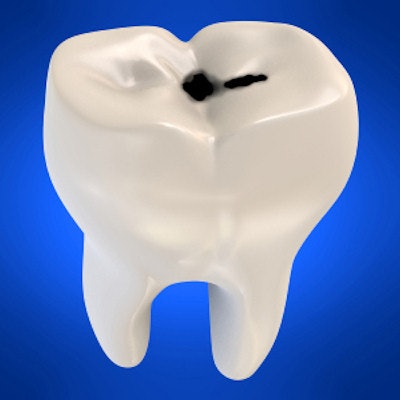
New guidelines jointly issued by the ADA and the American Academy of Pediatric Dentists (AAPD) may lead to an increased use of sealants in children and adolescents.
Sealants are effective in preventing and arresting pit-and-fissure occlusal carious lesions of primary and permanent molars in children and adolescents compared with the nonuse of sealants or the use of fluoride varnishes, the authors of the guidelines concluded.
"The authors recommend that clinicians reorient their efforts toward increasing the use of sealants on the occlusal surfaces of primary and permanent molars in children and adolescents," the guidelines concluded.
The new guidelines were published in the Journal of the American Dental Association (August 2016, Vol. 147:8, pp. 672-682) and also in Pediatric Dentistry.
4 questions
A guideline panel was convened by the ADA Council on Scientific Affairs and the AAPD in 2014. The panel members represented the different perspectives required for clinical decision-making and included general dentists, pediatric dentists, dental hygienists, and health policymakers.
The panel asked four questions:
- Should dental sealants, when compared with nonuse of sealants, be used in pits and fissures of occlusal surfaces of primary and permanent molars on teeth deemed to have clinically sound occlusal surfaces or noncavitated carious lesions?
- Should dental sealants, when compared with fluoride varnishes, be used in pits and fissures of occlusal surfaces of primary and permanent molars on teeth deemed to have clinically sound occlusal surfaces or noncavitated carious lesions?
- Which type of sealant material should be used in pits and fissures of occlusal surfaces of primary and permanent molars on teeth deemed to have clinically sound occlusal surfaces or noncavitated carious lesions?
- Are there any adverse events associated with the use of pit-and-fissure sealants?
Panel recommendations
For the first question, the panel made a strong recommendation endorsing the use of sealants in primary and permanent molars with both sound occlusal surfaces and noncavitated occlusal carious lesions in children and adolescents as compared with nonuse of sealants.
The panel, in addressing the second question, was able to conditionally recommend sealant use in primary and permanent molars, with both sound occlusal surfaces and noncavitated occlusal carious lesions, in children and adolescents when compared with fluoride varnishes.
However, citing a low quality of evidence, the panel was unable to determine type of sealant superiority (the third question), meaning that any of the materials studied (including, but not limited to, resin-based sealants, resin-modified glass ionomer sealants, glass ionomer cements, and polyacid-modified resin sealants) can be used in permanent molars in children and adolescents.
For the fourth question concerning adverse effects, the panel noted that it has been suggested by previous studies that the bisphenol A (BPA) in some sealants may have estrogen-like effects. The evidence does not support "the transient effect of a small amount of BPA in placing patients at risk," the panel concluded. It also noted that two randomized controlled trials found no adverse effects associated with sealant use.
The panelists concluded that the sealants available in the U.S. market are an effective intervention for reducing the incidence of carious lesions in the occlusal surfaces of primary and permanent molars in children and adolescents compared with the nonuse of sealants or fluoride varnishes.
They noted, however, that patient factors need to be carefully considered and urged further research, with an emphasis on creating a chairside tool that would allow practitioners to accurately assess a patient's risk of caries.



















